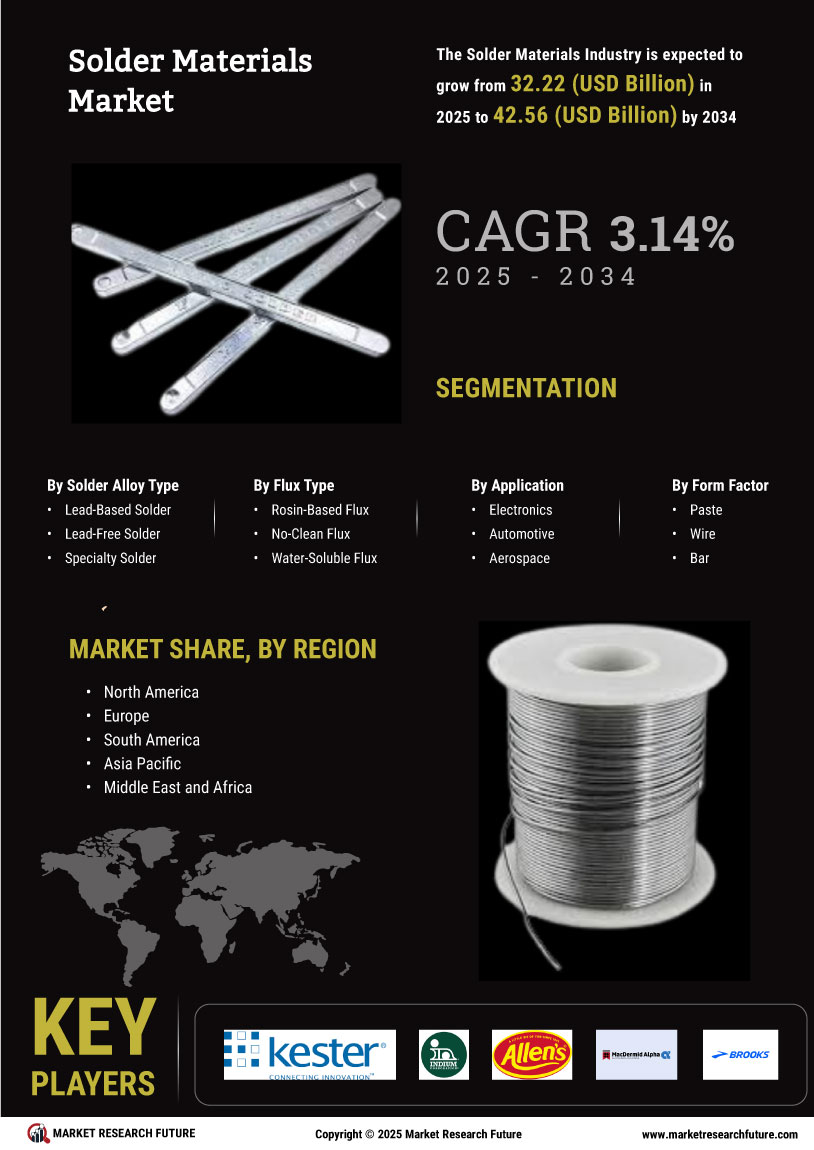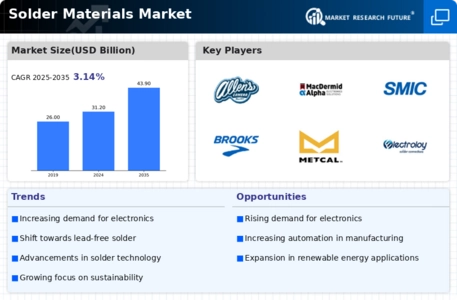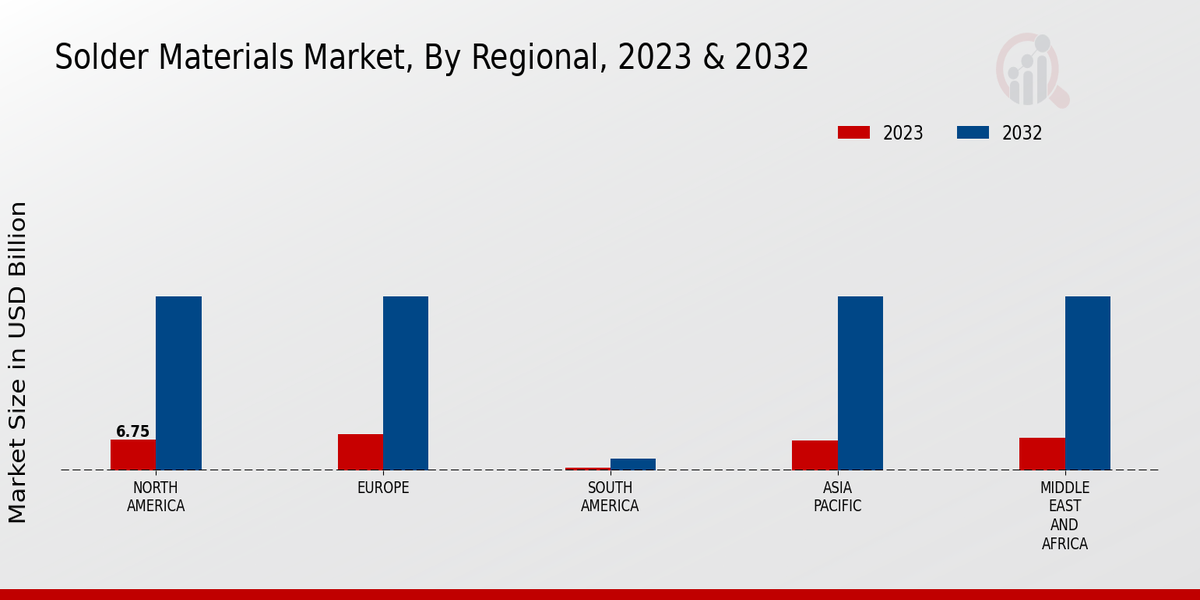Market Growth Projections
The Global Solder Materials Market Industry is poised for substantial growth, with projections indicating a market size of 31.2 USD Billion in 2024 and an anticipated increase to 43.9 USD Billion by 2035. This growth trajectory suggests a compound annual growth rate (CAGR) of 3.14% from 2025 to 2035. Factors contributing to this growth include the rising demand for electronics, advancements in soldering technologies, and the shift towards environmentally friendly materials. The market's expansion is expected to be driven by both established and emerging players, who are likely to innovate and adapt to changing consumer preferences and regulatory requirements.
Growing Electronics Industry
The expansion of the electronics industry is a primary driver for the Global Solder Materials Market Industry. As consumer demand for electronic devices continues to rise, manufacturers require high-quality solder materials for efficient production. In 2024, the market is projected to reach 31.2 USD Billion, reflecting the increasing reliance on soldering processes in electronics assembly. This trend is expected to persist, with the market anticipated to grow at a CAGR of 3.14% from 2025 to 2035, reaching 43.9 USD Billion by 2035. The integration of advanced technologies in electronics further necessitates the use of specialized solder materials, thereby bolstering market growth.
Regulatory Standards and Compliance
The imposition of stringent regulatory standards regarding the use of solder materials is a significant factor affecting the Global Solder Materials Market Industry. Governments worldwide are increasingly focusing on environmental and health regulations, particularly concerning lead-free solder materials. Compliance with these regulations is essential for manufacturers to avoid penalties and maintain market access. As a result, there is a growing shift towards lead-free and eco-friendly solder materials, which are expected to dominate the market. This shift not only aligns with global sustainability goals but also contributes to the anticipated market growth, with projections indicating a rise to 43.9 USD Billion by 2035.
Advancements in Soldering Technologies
Technological advancements in soldering processes significantly influence the Global Solder Materials Market Industry. Innovations such as selective soldering and laser soldering enhance efficiency and precision in electronic assembly. These advancements not only improve production rates but also reduce defects, which is crucial for maintaining quality standards in electronics manufacturing. As companies adopt these technologies, the demand for specialized solder materials that can withstand higher temperatures and provide better conductivity is likely to increase. This trend aligns with the projected growth of the market, which is expected to reach 43.9 USD Billion by 2035, driven by the need for improved soldering solutions.
Market Trends and Consumer Preferences
Shifting market trends and evolving consumer preferences play a pivotal role in shaping the Global Solder Materials Market Industry. As consumers increasingly demand high-performance electronic devices, manufacturers are compelled to adopt advanced solder materials that enhance product reliability and longevity. This shift is evident in the growing preference for solder materials that offer superior thermal and electrical conductivity. Additionally, the rise of smart devices and IoT applications necessitates the use of innovative soldering solutions. These trends are likely to drive market growth, with projections indicating a market size of 43.9 USD Billion by 2035, reflecting the dynamic nature of consumer demands.
Rising Demand for Renewable Energy Solutions
The increasing focus on renewable energy solutions is emerging as a crucial driver for the Global Solder Materials Market Industry. As the world transitions towards sustainable energy sources, the demand for solar panels and wind turbines is surging. These technologies require reliable solder materials to ensure efficient electrical connections and durability. The growth of the renewable energy sector is likely to create new opportunities for solder manufacturers, as they develop materials that meet the specific needs of these applications. This trend is expected to contribute to the market's expansion, with a projected value of 31.2 USD Billion in 2024 and further growth anticipated through 2035.











